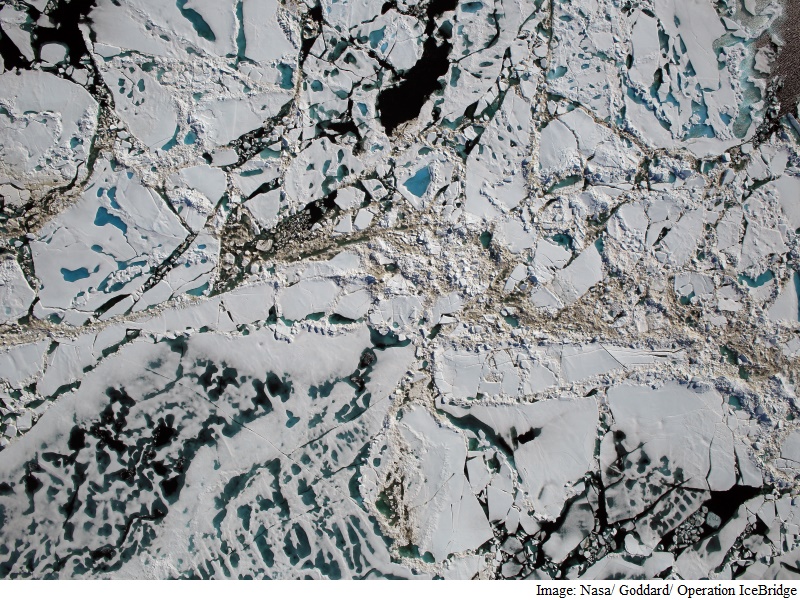- Home
- Science
- Science News
- First Half of 2016 the Warmest Half Year on Record, Says Nasa
First Half of 2016 the Warmest Half-Year on Record, Says Nasa

Each of the first six months of 2016 set a record as the warmest respective month globally in the modern temperature record, which dates to 1880, according to scientists at Nasa's Goddard Institute for Space Studies (GISS) in New York.
Analysing ground-based observations and satellite data, the scientists found that two key climate change indicators - global surface temperatures and Arctic sea ice extent - had broken numerous records through the first half of 2016.
While these two key climate indicators have broken records in 2016, Nasa scientists said it is more significant that global temperature and Arctic sea ice are continuing their decades-long trends of change.
Both trends are driven by rising concentrations of heat-trapping carbon dioxide and other greenhouse gases in the atmosphere, the scientists said.
"While the El Nino event in the tropical Pacific this winter gave a boost to global temperatures from October onwards, it is the underlying trend which is producing these record numbers," Gavin Schmidt, Director, Goddard Institute for Space Studies, said in a statement.
Previous El Nino events have driven temperatures to what were then record levels, such as in 1998.
But in 2016, even as the effects of the recent El Nino taper off, global temperatures have risen well beyond those of 18 years ago because of the overall warming that has taken place in that time.
The global trend in rising temperatures is outpaced by the regional warming in the Arctic, said Walt Meier, a sea ice scientist at Nasa Goddard.
"It has been a record year so far for global temperatures, but the record high temperatures in the Arctic over the past six months have been even more extreme," Meier said.
"This warmth as well as unusual weather patterns have led to the record low sea ice extents so far this year," Meier noted.
The extent of Arctic sea ice at the peak of the summer melt season now typically covers 40 percent less area than it did in the late 1970s and early 1980s, the scientists said.
Nasa tracks temperature and sea ice as part of its effort to understand the Earth as a system and to understand how Earth is changing.
In addition to maintaining 19 Earth-observing space missions, Nasa also sends researchers around the globe to investigate different facets of the planet at closer range.
Nasa researchers are currently working across the Arctic to better understand both the processes driving increased sea ice melt and the impacts of rising temperatures on Arctic ecosystems.
Get your daily dose of tech news, reviews, and insights, in under 80 characters on Gadgets 360 Turbo. Connect with fellow tech lovers on our Forum. Follow us on X, Facebook, WhatsApp, Threads and Google News for instant updates. Catch all the action on our YouTube channel.
Related Stories
- Samsung Galaxy Unpacked 2025
- ChatGPT
- Redmi Note 14 Pro+
- iPhone 16
- Apple Vision Pro
- Oneplus 12
- OnePlus Nord CE 3 Lite 5G
- iPhone 13
- Xiaomi 14 Pro
- Oppo Find N3
- Tecno Spark Go (2023)
- Realme V30
- Best Phones Under 25000
- Samsung Galaxy S24 Series
- Cryptocurrency
- iQoo 12
- Samsung Galaxy S24 Ultra
- Giottus
- Samsung Galaxy Z Flip 5
- Apple 'Scary Fast'
- Housefull 5
- GoPro Hero 12 Black Review
- Invincible Season 2
- JioGlass
- HD Ready TV
- Laptop Under 50000
- Smartwatch Under 10000
- Latest Mobile Phones
- Compare Phones
- OnePlus Ace 6T
- OPPO A6x 5G
- Samsung Galaxy Z TriFold
- Poco F8 Ultra
- Poco F8 Pro
- Huawei Mate 80 RS Master Edition
- Huawei Mate 80 Pro Max
- Huawei Mate 80 Pro
- Asus ProArt P16
- MacBook Pro 14-inch (M5, 2025)
- Poco Pad M1
- Poco Pad X1
- Just Corseca Skywatch Pro
- Honor Watch X5
- Acerpure Nitro Z Series 100-inch QLED TV
- Samsung 43 Inch LED Ultra HD (4K) Smart TV (UA43UE81AFULXL)
- Asus ROG Ally
- Nintendo Switch Lite
- Haier 1.6 Ton 5 Star Inverter Split AC (HSU19G-MZAID5BN-INV)
- Haier 1.6 Ton 5 Star Inverter Split AC (HSU19G-MZAIM5BN-INV)

















